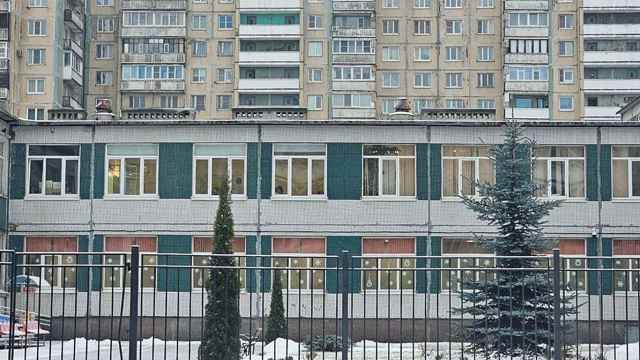
Sergei Stefanishin
Partner
Ernst & Young Moscow
All land in Russia is divided into seven categories, according to its designated purpose and the limitations of its use. According to statistics, as of Jan. 1, 2010, agricultural land is the second-biggest category with 23.4 percent of the total area of land in Russia, the first being forest land with 64.8 percent. The same statistics show that land suitable for commercial construction (industrial land and settlements) makes up only 2.2 percent of the total area of land.
These statistics prove that it is quite likely that more land will have to be recategorized to allow commercial construction thereon. There are many cases in practice of investors acquiring agricultural lands due to their availability and lower pricing, with the further intention of changing the land category into one more suitable for their purposes. The actual timing of the category change of the land differs from region to region but would normally range from eight to 16 months.
The current federal law on turnover of agricultural lands empowers the authorities to claim seizure of a privately owned agricultural land plot if the owner has improperly used the land plot or used it in violation of its purpose for three years. Improper use in each case is determined by the courts in accordance with the Land Code.
On Dec. 29, 2010, President Dmitry Medvedev signed amendments to the Federal Law on turnover of agricultural lands changing the grounds of and procedure for seizure of agricultural lands from private ownership. The amendments shall come into effect on July 1, 2011.

Dmitry Simakov
Manager
Ernst & Young Moscow
Currently, the state authorities may claim seizure of a privately owned agricultural land plot in the following cases:
- if the land plot is used in violation of the requirements for efficient use of the land provided by the land legislation, which has led to a significant decrease in its fertility or significant aggravation of the ecological situation;
- if, within three or more consecutive years from the date the owner acquired the land plot, the latter has not been used for agricultural production or other activities associated with agricultural production. The attributes of such non-use are to be elaborated by the government.
Both current and amended laws contain a three-year period when the owner of the agricultural land plot is to commence using it in accordance with its purpose, or for the purposes of agricultural production. Speaking about an investor who has acquired an agricultural land plot with the intention of changing its category for further commercial construction, the investor may encounter a risk of the land plot being seized before its category is changed.
It is difficult to predict the development of practice of the amended law. On the one hand, starting the procedure to change a land plot's category may serve as an excuse for non-use of the land for the purposes of agricultural production. On the other hand, the situation can be more complicated. For example, an investor may have acquired a company owning agricultural land for three or almost three years and has neither used the land plot for agricultural purposes, nor initiated a change of category for the land plot. Also, the fact that the procedure to change a land plot's category has been started may not be considered as an excuse in a particular case, given the exact details of the land plot or intended construction on the land plot.
The amended law specifies the time that is not to be included in the discussed three-year period: time during which the land plot could not be used in accordance with its purpose due to an act of God, as well as time required for reclamation of the land plot, which may not exceed two years. In our opinion, the reclamation should include activities preparing the land plot for agricultural use. At the same time, we must note that the current federal laws do not explicitly define the activities included in reclamation of agricultural lands.
The procedure for the seizure of a land plot specified in the amended law comprises the following steps:
- the state land-controlling authority (Federal Land Cadastre Service) is to impose an administrative sanction for violation, which may lead to seizure of the land plot. Together with this, the said state authority is to issue a warning letter setting the period for elimination of the violation. The law does not specify the maximum duration of that period;
- if the violation is not eliminated within the said period, the Federal Land Cadastre Service submits the information and documents thereon to the executive authority of the respective region of Russia, which may file a court claim on seizure of the land plot and its sale through public auction;
- within six months of the effective date of the court decision, the executive authority is to procure holding of a public auction of the seized land plot. If the public auction is considered abortive, the land plot may be, but does not have to be, acquired by the state or municipality at the starting price of the public auction. This acquisition has to take place within two months of the date the public auction was recognized abortive.
It should be noted that the revenues received from the sale of the seized land plot at public auction or received as the result of its acquisition by the state or municipality, and decreased by the amount spent on the organization of the public auction, are to be transferred to the former owner of the land plot.
In our opinion, the amendments to the federal law on turnover of agricultural lands have made the procedure for seizure of agricultural land plots clearer and more transparent. At the same time, the law specifies no scenario for the case of the seized land plot being neither sold via public auction, nor bought by the state or municipality. Further developments in the practice of land seizure are also expected to play a significant role in investors' decision-making processes, although we are reluctant to think that the amended law would discourage investors from considering acquisition of agricultural land for further rezoning.
The federal law mentioned above introduces other amendments. Among the most significant of them are:
- new provisions on the activities of the local authorities to be performed with land shares in municipal ownership; activities to be taken with unclaimed land shares by other participants of shared land ownership;
- new provisions on formation of a land plot from a land plot in shared ownership, including the introduction of provisions on land surveying;
- new provisions on holding, using and disposing of land plots in shared ownership, including the introduction of provisions on the general meeting of the participants of a shared ownership.
A Message from The Moscow Times:
Dear readers,
We are facing unprecedented challenges. Russia's Prosecutor General's Office has designated The Moscow Times as an "undesirable" organization, criminalizing our work and putting our staff at risk of prosecution. This follows our earlier unjust labeling as a "foreign agent."
These actions are direct attempts to silence independent journalism in Russia. The authorities claim our work "discredits the decisions of the Russian leadership." We see things differently: we strive to provide accurate, unbiased reporting on Russia.
We, the journalists of The Moscow Times, refuse to be silenced. But to continue our work, we need your help.
Your support, no matter how small, makes a world of difference. If you can, please support us monthly starting from just $2. It's quick to set up, and every contribution makes a significant impact.
By supporting The Moscow Times, you're defending open, independent journalism in the face of repression. Thank you for standing with us.
Remind me later.





